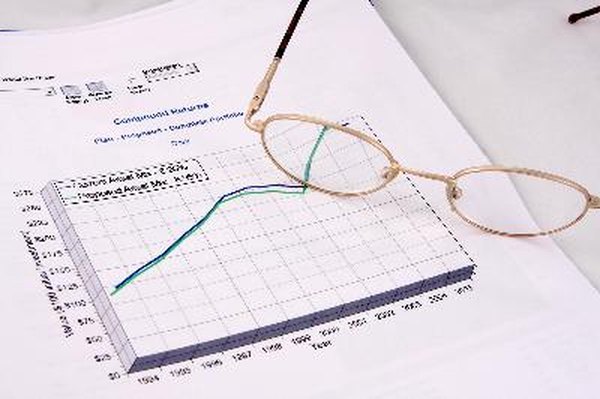How to Calculate Compound Investments Semiannually
Measure the effects of semiannual compounding on your investments.
Compound returns chart image by Gramper from Fotolia.com
When you’re investing, the expected rate of return or interest rate is a great place to start when comparing your options. But to make sure you’re getting the best return, you need to know how often interest compounds on an investment. To calculate compound investments, you need to know how much you are investing, the expected rate of return, how long you’ll invest for and how often interest compounds. The compound interest formula includes exponents, so you’ll probably need a calculator if you want to do it by hand instead of using a website, such as the U.S. Securities and Exchange Commission online calculator, to calculate it.
Tip
In order to calculate your compound interest, you will need to know how much you are planning on investing, how long you will be investing for, the interest rate used and the method in which interest will compound.
Effects of Interest Compounding
When interest compounds, the interest that has accrued to date is added to your balance, and then continues to earn additional interest in the future. The more often interest compounds, the higher the effective rate of return will be over time. For example, two certificates of deposit might appear to offer the same interest rate, but if one compounds interest every year while the other compounds interest every day, you’ll end up with more money by investing in the CD that compounds interest daily. However, depending on the amount you’re investing and how long you’ll invest for, the difference might not be especially significant.
Compound Interest Formula
If you want to calculate what your investments will be worth based on returns that compound semiannually, first, divide the annual rate of return by 100 to convert it to a decimal. Second, divide the annual rate as a decimal by 2 to convert it to a semiannual rate of return. Third, add 1. Fourth, raise the result to the power of the number of semiannual periods the investment will grow. Fifth, multiply the result by the amount invested to calculate how much the investment will be worth in the future. Finally, subtract the initial investment from what the investment will be worth to find the gain.
For example, say you are investing $3,000 in a five-year CD that pays 2.12 percent interest, compounded semiannually. To find out how much it will be worth and how much interest you will earn when it matures, first divide 2.12 by 100 to convert it to a decimal of 0.0212. Second, divide 0.0212 by 2 to find the semiannual interest rate is 0.0106. Third, add 1 to get 1.0106. Fourth, raise 1.0106 to the 10th power because there are 10 semiannual periods in five years to get 1.1112. Fifth, multiply your investment of $3,000 by 1.1112 to find the CD will be worth $3,333.60 at maturity. Finally, subtract $3,000 from $3,333.60 to find you’ll have earned $333.60 in interest.
References
Warnings
- If you withdraw money from your investment before the end of your holding period, you will diminish the effects of semiannual compounding and your investment will not reach your calculated value.
Writer Bio
Based in the Kansas City area, Mike specializes in personal finance and business topics. He has been writing since 2009 and has been published by "Quicken," "TurboTax," and "The Motley Fool."

